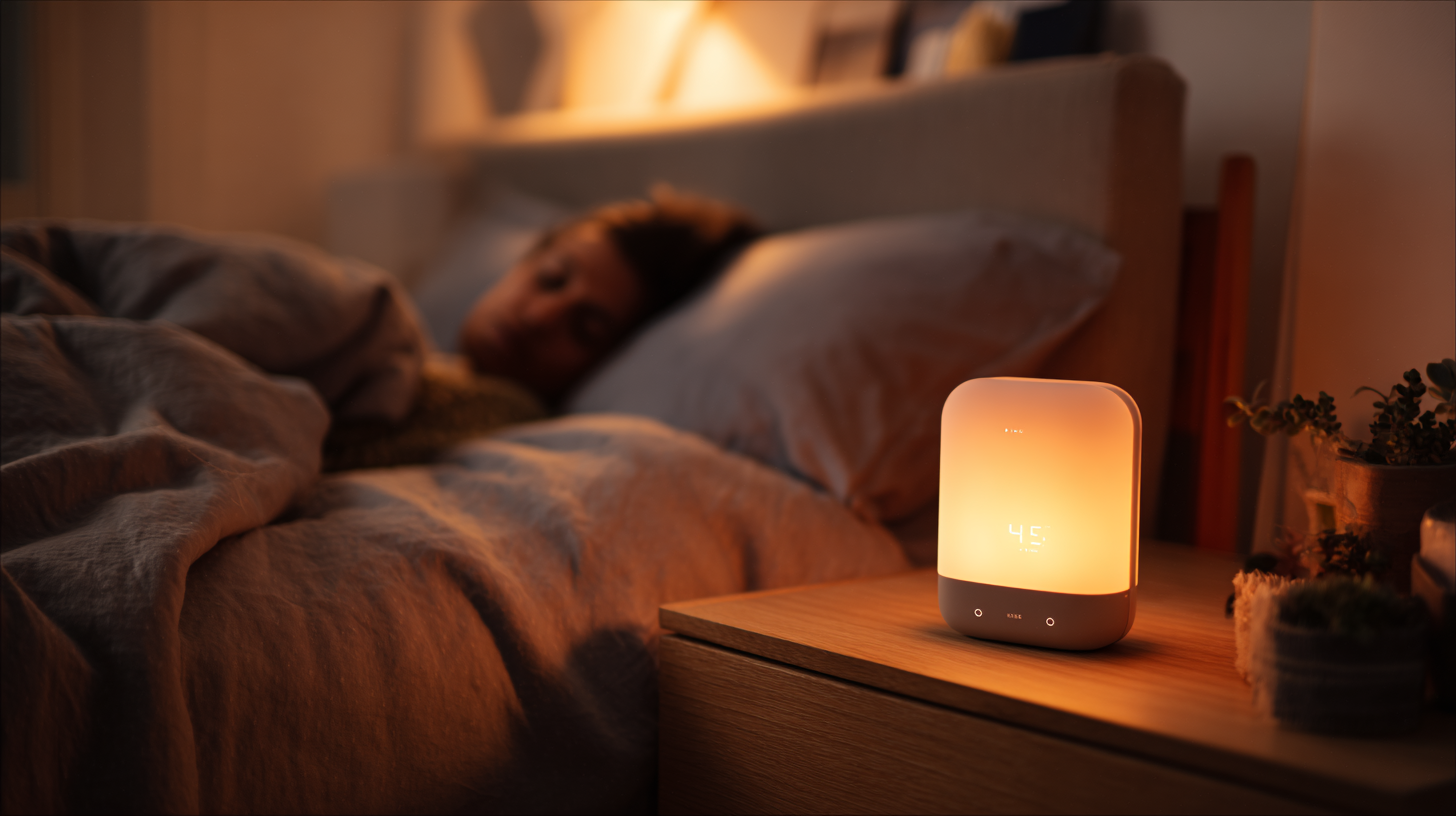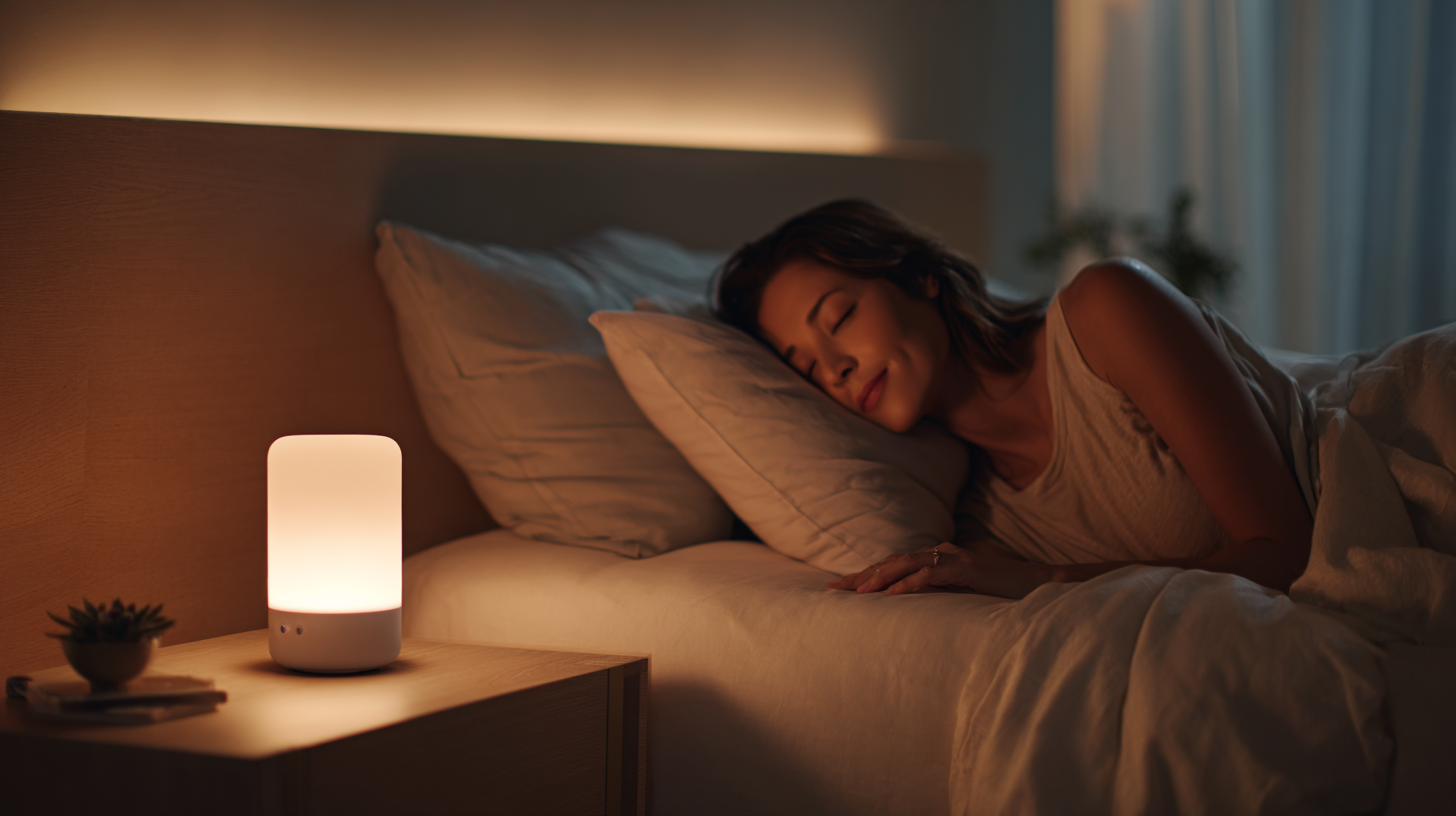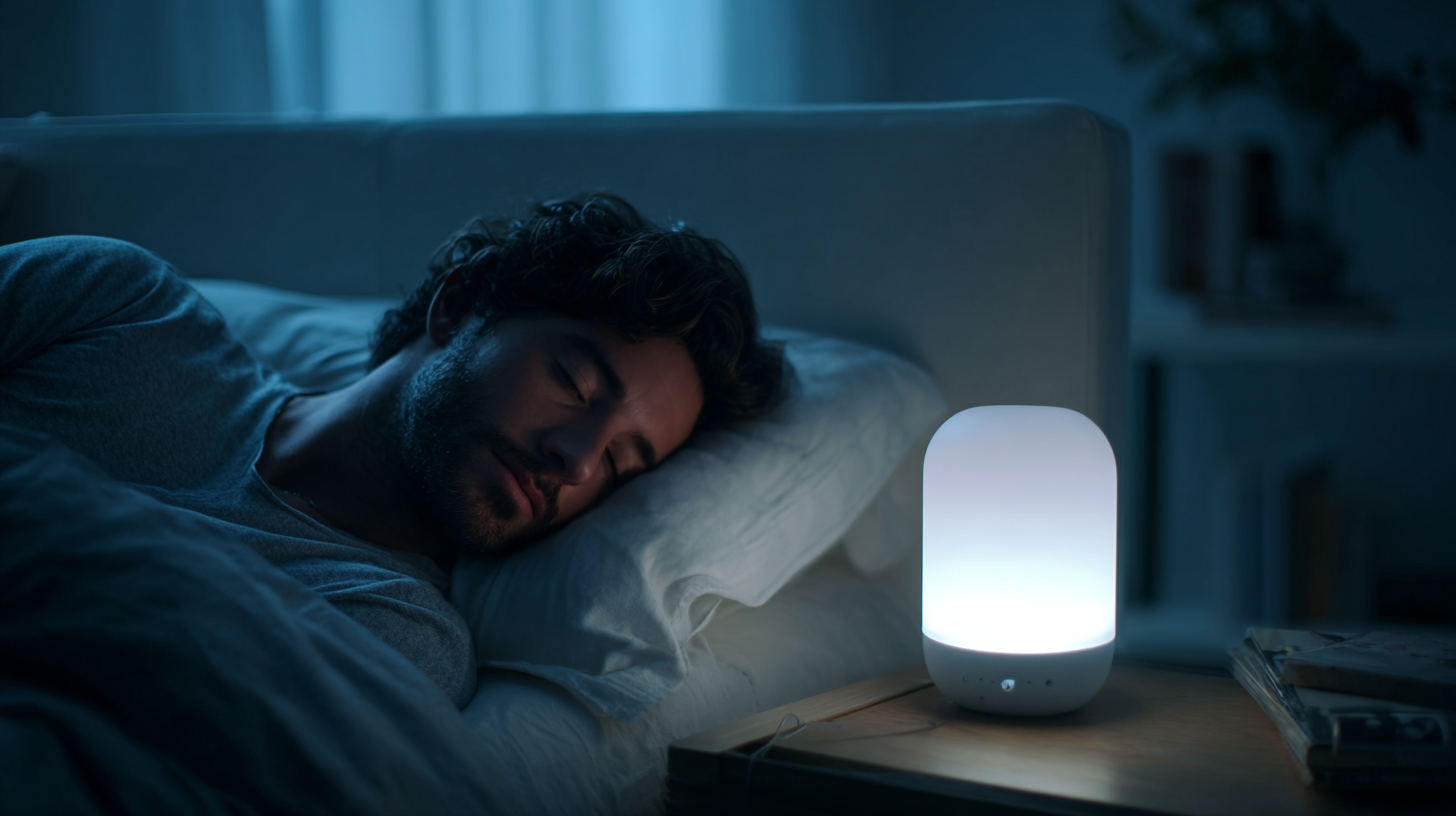Discover the 2025 Trends in Sleep Technology and How to Choose the Best Sleep Light
As we approach 2025, the landscape of sleep technology is evolving at an unprecedented pace, influenced by a growing global awareness of the importance of quality sleep. According to a recent report by the Sleep Foundation, 76% of adults report sleeping better when using sleep technology, such as sleep lights, which have been shown to improve sleep onset and duration. As more consumers seek solutions to combat sleep disorders exacerbated by modern lifestyles, the demand for innovative sleep lights has surged. Designed to mimic natural light cycles, these devices help regulate circadian rhythms, making them an essential tool in the quest for better sleep. In this blog, we will explore the emerging trends in sleep technology for 2025 and provide insights on selecting the best sleep light to enhance your nightly rest.

Emerging Sleep Technology Trends to Watch in 2025
As we approach 2025, the landscape of sleep technology is rapidly evolving, driven by a growing understanding of sleep science and consumer demand for better sleep solutions. A recent report by Grand View Research highlights that the global sleep technology market is expected to reach $138.7 billion by 2028, growing at a CAGR of 9.3%. This trend reflects an increasing awareness of the importance of sleep quality, pushing innovations in various tools and devices designed to enhance the sleep experience.

One of the most exciting developments in this space is the advent of smart sleep lights. These advanced devices use circadian rhythm science to create personalized lighting schedules that help regulate sleep patterns. According to a study published in the Journal of Biological Rhythms, light exposure significantly influences melatonin production, suggesting that utilizing the right type of sleep light can improve both the quantity and quality of sleep. With many consumers set to invest in sleep tech in 2025, understanding the features of these products—such as color temperature adjustments and integration with sleep monitoring systems—will be essential for making informed purchasing decisions.
Key Features to Look for in Sleep Light Devices
As we delve into the 2025 trends in sleep technology, choosing the right sleep light can significantly enhance your nightly routine. When selecting a sleep light device, one of the key features to consider is its brightness adjustment capabilities. A versatile dimming function allows users to customize the light intensity, creating the perfect ambiance for winding down before sleep or gradually waking up in the morning.
Another important feature is the color temperature of the light. Research suggests that warm, soft light can promote relaxation and better sleep quality, while cooler light is more suitable for waking up. Look for sleep lights that offer multiple color settings to cater to your specific needs throughout the night. Additionally, features like timers and sunrise/sunset simulations can replicate natural light patterns, further supporting your circadian rhythm and improving your overall sleep experience. With these considerations in mind, finding the ideal sleep light becomes an engaging journey toward better sleep health.
2025 Trends in Sleep Technology: Sleep Light Features Comparison
Understanding Sleep Cycles: The Science Behind Effective Sleep Lights
Understanding sleep cycles is crucial in selecting the most effective sleep light. Sleep is governed by various cycles, typically consisting of five distinct stages, including REM (Rapid Eye Movement) and non-REM sleep. A report by the National Sleep Foundation indicates that adults need between 7 to 9 hours of quality sleep each night to function optimally. Disruption in these cycles can lead to adverse health effects, such as decreased cognitive ability and heightened stress levels.
Effective sleep lights leverage the science of circadian rhythms to enhance sleep quality. Blue light, which is prevalent in screens and standard light bulbs, can interfere with melatonin production, a hormone essential for inducing sleep. A study published in the Journal of Clinical Sleep Medicine found that exposure to blue light before bedtime significantly delays sleep onset. On the other hand, sleep lights that emit warmer hues are designed to minimize blue light exposure, promoting a natural wind-down process and facilitating better sleep cycles. By understanding these principles, consumers can make informed choices, ensuring their sleep environment aligns with their biological needs.
Regulatory Standards Governing Sleep Technology Products
The sleep technology industry is rapidly evolving, and regulatory standards play a crucial role in ensuring consumer safety and product efficacy. In 2023, the global sleep technology market was valued at approximately $76 billion and is projected to grow significantly as awareness about sleep health rises.
 Regulatory bodies like the FDA in the United States and the European Medicines Agency (EMA) are increasingly involved in overseeing sleep-related products, particularly sleep lights and wearable devices that track sleep patterns. These regulations often focus on the safety of materials, the accuracy of sleep data, and claims made by manufacturers.
Regulatory bodies like the FDA in the United States and the European Medicines Agency (EMA) are increasingly involved in overseeing sleep-related products, particularly sleep lights and wearable devices that track sleep patterns. These regulations often focus on the safety of materials, the accuracy of sleep data, and claims made by manufacturers.
Recent reports indicate that about 70 million adults in the U.S. suffer from sleep disorders, highlighting an urgent need for reliable sleep technology solutions. The need for compliance with ISO standards, including ISO 13485 for medical devices and ISO 14971 for risk management, ensures that products not only perform effectively but also pose minimal risk to users.
As consumers become more discerning, manufacturers must navigate these regulations carefully while providing transparent information about their products. When selecting a sleep light, it is essential to consider whether it has been tested against these strict standards, ensuring that it will contribute positively to your sleep hygiene and overall health.
Practical Tips for Choosing the Right Sleep Light for Your Needs
When selecting the right sleep light, it’s important to consider your personal needs and preferences. First, think about the brightness levels. Some individuals may prefer a soft, dim glow to help them unwind, while others might need a brighter light to read or engage in nighttime activities. Look for sleep lights that offer adjustable brightness settings, allowing you to customize the intensity based on your mood and the time of night.
Next, consider the color temperature of the light. Studies have shown that warmer light, such as amber or red hues, can promote relaxation and melatonin production, making it easier to fall asleep. Aim for lights with adjustable color settings so you can experiment and find what helps you wind down best. Additionally, features like built-in timers or sunset simulations can create a bedtime routine that signals your body it’s time to sleep. Taking these factors into account will ensure you select a sleep light that not only complements your environment but also enhances your overall sleep quality.
Discover the 2025 Trends in Sleep Technology and How to Choose the Best Sleep Light
| Feature | Description | Benefits | Considerations |
|---|---|---|---|
| Adjustable Brightness | Allows users to customize light intensity | Enhances sleep environment and promotes relaxation | Ensure it fits personal preferences |
| Color Temperature Control | Options for warmer or cooler light tones | Supports circadian rhythms and minimizes sleep disruptions | Choose based on desired sleeping conditions |
| Sleep Cycle Tracking | Monitors sleep patterns through connected technology | Offers insights into sleep quality and improvements | Requires compatible smartphone apps |
| Smart Home Integration | Connects with smart home devices for automated settings | Convenience of controlling settings through voice or apps | Compatibility with existing smart devices is essential |
| Sunrise Simulation | Gradually increases light to mimic a natural sunrise | Promotes a gentler waking experience and improves mood | Evaluate the timing and duration of the simulation |
